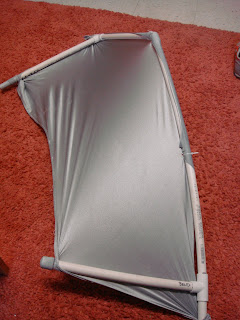
My final experiment is soldering glass pieces together to make stain glass. To do this you need copper foil that is sticky on one side to adhere to the glass. First you apply the copper foil to the edges of the two you want to solder together. You take the hanging over foil and fold the edges over to the top and bottom services of the glass. This copper is what the solder attaches to. In order to solder the pieces together you have to brush flux on the copper to clean it. You can then finally heat the soldering wire and solder the two pieces together. I have found that this process is both easy and difficult. The process itself is fairly simple but I have never soldered before so it is very challenging for me to create a smooth solder line. I think I want to use this method of joining the glass together instead of gluing because I think it would be beneficial for me to improve my soldering skills. Also as of now I am still not sure how to place the foil and solder edges together to make a right angle instead of just joining to pieces hat make a flat surface.
















